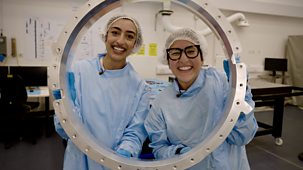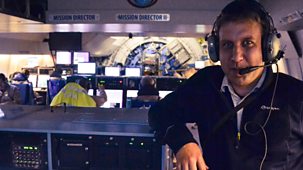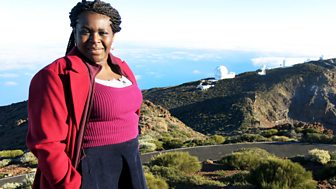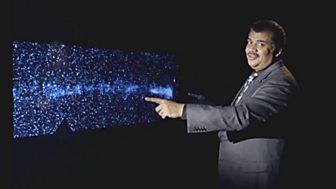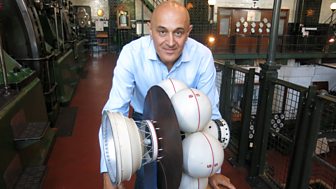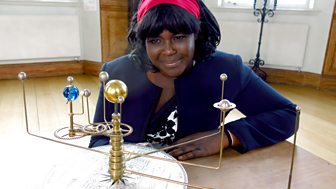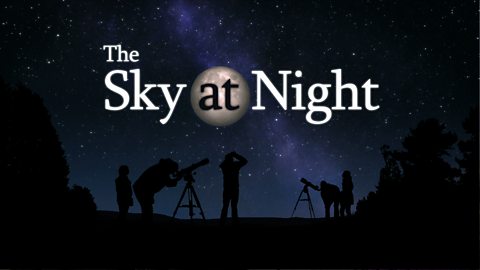
The Sky at Day
The British weather is often the enemy of stargazers up and down the country. A forecast of a couple of hours of cloud cover will disappoint even the most determined amateur astronomers. In this programme, the Sky at Night becomes the ‘Sky at Day’, providing an alternative range of spectacles to observe and activities to partake in, ideal when the nights are short and the stars are hiding behind the clouds.\n\nThe most obvious spectacle to observe is of course our own star, the sun. A moment is needed to appreciate that whilst amateurs and scientists alike spend lifetimes and whole careers searching for distant stars in the night sky, we have a star on our celestial doorstep that we can actually send a space probe to. In 2018, that is exactly what Nasa did. The idea for the Parker Solar Probe was conceived in 1958, but it took 60 years to develop the technology to make it possible, namely working out how to prevent it from melting. \n\nJustin Kasper, principal investigator for the Sweap instrument (Solar Wind Electrons Alphas and Protons investigation), spoke to Chris about how the probe entered the sun’s atmosphere and made incredible discoveries about its structure. It revealed that the boundary where solar material anchored to the sun first escapes and becomes the solar wind is not a smooth ball but has spikes and valleys that wrinkle the ‘Alfvén critical surface’. Previously, the coronal streamers that cause this wrinkling had been observed from a distance but never measured directly until Sweap came along. Its discoveries are altering what scientists know about the way in which the sun’s atmosphere transforms into the solar wind.\n\nBack on earth, Dr Hannah Wakeford shows us how observing the sun as it rises and sets can tell us a huge amount about the composition of our atmosphere and the weather on the horizon. The adage ‘Red sky at night, shepherd’s delight. Red sky in the morning, shepherd’s warning’ is dismissed as many as an old wives’ tale. However, due to our unique position in the mid-latitudes, it turns out that this saying may be more accurate than many think. Hannah also explores, as light travels from the sun to our eye, how different wavelengths are absorbed and scattered by the atmosphere. The light that completes the journey to our eye or our telescope can reveal the combination of gases that make up the atmosphere. Hannah explains how this process has helped scientists to work out the composition of the atmosphere of other planets in our solar system and even exoplanets orbiting distant stars.\n\nExploring during the day can sometimes unlock a whole new scientific field. Guest presenter George Dransfield spoke to urban micrometeorite hunter Jon Larsen about how he accidentally discovered a micrometeorite on his garden table whilst eating strawberries on a fine summer’s day, and how, ever since, he has been pioneering a method for amateurs across the globe to discover pieces of stardust in their own back garden. George tries to find some micrometeorites of her own, and in the process, learns about the huge spectrum of micrometeorites that Jon, along with his partner Jan Braly Kihle, has found and photographed in astounding detail. \n\nAs well as hunting meteorites and watching the sunset, there is also stargazing to be done during the day. Amateur astronomer and outreach hero Simon Holbeche from Bath spends every sunny weekend showing members of the public the sun in a whole new light. Using different specialist telescopes and heavy solar filters, Simon is able to show passers-by the incredible sunspots on the solar surface and the exploding prominences in the sun’s atmosphere. His enduring hope is that the people he meets might become hooked by what they’ve seen, and one day come back to see the sky at night.
Source: BBC 4
Most recent episodes of The Sky at Night
The Sky At Night
Asteroid Strike?
The team explore one of the biggest stories in space news, the ‘city killer’ asteroid 2024 YR4. First observed on 27 December 2024, it soon became one of the biggest ...
17-04-2025
BBC 4
The Sky At Night
Ancestral Skies
This month, The Sky at Night teams up with BBC Ideas to discover the secrets of archaeology and astronomy and to reflect on our ancestral skies. \n\nThroughout history and acros ...
14-11-2024
BBC 4
The Sky At Night
Question Time Special
Get ready for The Sky at Night’s annual Question Time Special, where viewers get the opportunity to ask the questions they have always wanted answered about our universe.\ ...
08-10-2024
BBC 4
The Sky At Night
2075: Our Place In Space
The Sky at Night is embarking on a journey into the future as we explore how space will revolutionise life on Earth over the next 50 years. As humanity's reach extends into the ...
11-09-2024
BBC 4
The Sky At Night
Nicky, Nasa And The Next Frontier
In this Sky at Night special, the team talk to Dr Nicola Fox, NASA’s head of science, whose life began in the UK.\n\nPresenter Chris Lintott chats to Nicky about her early ...
15-08-2024
BBC 4
The Sky At Night
Webb Telescope: The Story So Far
In July 2022, the James Webb Space Telescope released its first images. They were visually stunning, and it was clear they provided more detail of stars, galaxies and planets th ...
11-07-2024
BBC 4
The Sky At Night
Cosmic Ghosts
This month, The Sky at Night has a spooky twist. Across the universe, there are hidden objects that we can’t see, but astronomers and scientists still believe they’r ...
13-06-2024
BBC 4
The Sky At Night
Hiding In Starlight
Total solar eclipses, like the one seen last month in North America, allow us to see details of the Sun that can’t be seen at any other time. So, this month, The Sky at Ni ...
16-05-2024
BBC 4
The Sky At Night
Space Rock Return
The Sky at Night is back for a brand new series, and this month it is delving into Nasa’s OSIRIS-REx mission, which last year brought back a sample from the near-Earth ast ...
11-04-2024
BBC 4
Most popular episodes of The Sky at Night
The Sky At Night
Asteroid Strike?
The team explore one of the biggest stories in space news, the ‘city killer’ asteroid 2024 YR4. First observed on 27 December 2024, it soon became one of the biggest ...
17-04-2025
BBC 4
The Sky At Night
Telescope On A Plane!
Telescope on a Plane!\n\nIn this special programme, the Sky at Night takes to the air on board the largest airborne observatory in the world – a specially modified jumbo j ...
09-12-2018
BBC 4
The Sky At Night
The Sky At Day
The British weather is often the enemy of stargazers up and down the country. A forecast of a couple of hours of cloud cover will disappoint even the most determined amateur ast ...
13-07-2022
BBC 4
The Sky At Night
How Gravity Shapes The Universe
The team travels to the Brecon Beacons AstroCamp to see how gravity shapes the universe. Chris finds out about the newest moon in the solar system.
18-05-2014
BBC 4
The Sky At Night
Telescope Takeover
The team travel to the island of La Palma in the Canary Islands where they take control of some of the world's largest telescopes to view the most spectacular sights in the nigh ...
12-02-2017
BBC 4
The Sky At Night
Impacts
The team looks at the cosmic impacts which have shaped the universe around us, from asteroids crashing into the surface of the moon to galaxies colliding with each other.
15-06-2014
BBC 4
The Sky At Night
Guides: 2. Galaxies
Galaxies are the building blocks of the universe. Our solar system sits inside a huge galaxy that we call the Milky Way - home to as many as 300 billion stars. But the Milky Way ...
11-08-2019
BBC 4





